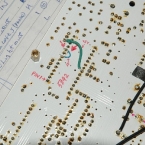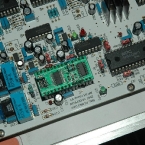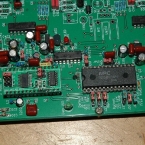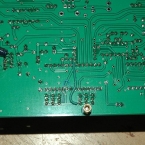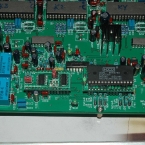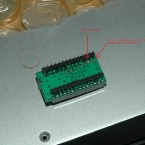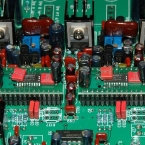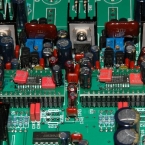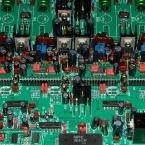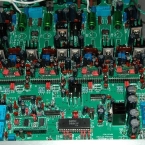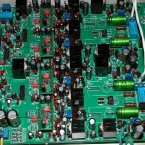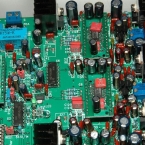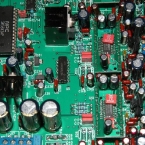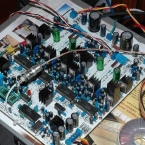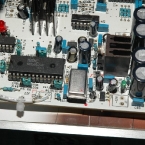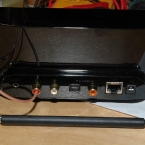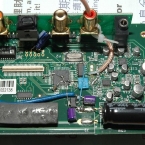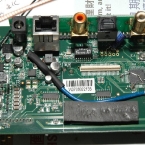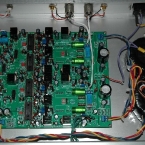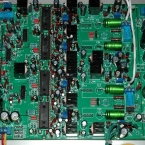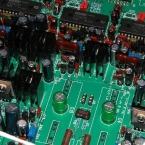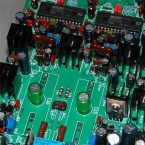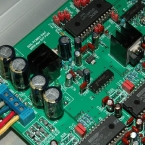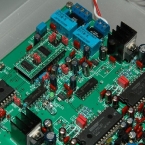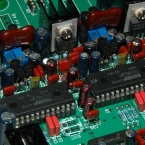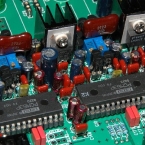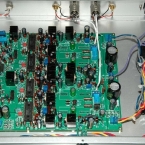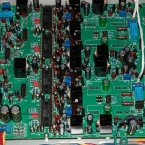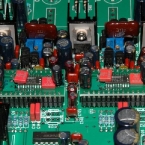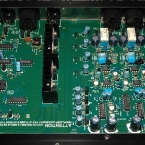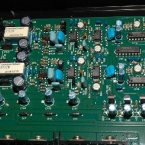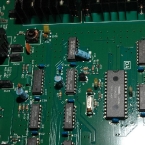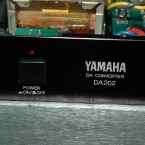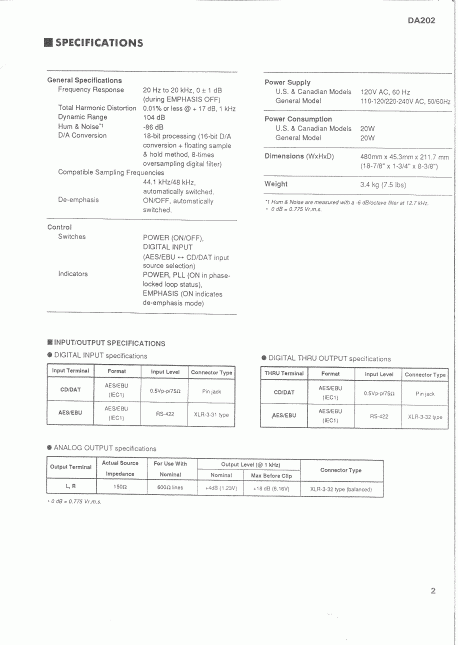I remember there is one diyer of D1V3 told me that D1 is not able to receive true 24 bit digital data format. The reason is that D1 has choosen to use 18 bit modes for CS8414 and SM5842. In order for D1V3 and D1V33 to receive 24 bit data, I have tried out successfully to use the 24 bit Right Justified mode for both DIR9001 and SM5842. Below is the details.
For DIR9001, set Pin 25 FMT0=H and Pin 26 FMT1=L means 24 bit Right Justified output data mode. This is a easy setting by J1 short and J2 open on the DIR9001 converter board.
For SM5842, the pin 5 IW1N and Pin 10 IW2N has to be both Low (GND) for 24 bit data input mode right justified. In the design of the pcb, there is no jumper setting for SM5842 IW2N (pin 10) which is always tie to +5V (High). Thus the follow procedure has to be done to make the change to 24bit data input mode.
- Cut the trace on the bottom of the pcb on both sides of the pin 10 trace as shown. Cut two line with 1mm width and remove copper in between as in the picture. Check with ohmmeter for open circuit.
- Solder a wire from the Pin 10 of SM5842 to Pin 8 which is ground pin (thin blue wire).
- Connect a wire (thick green wire) from +5V supply of SM5842 to the jumper side as show in the pictures. This is to ensure the jumpers has the +5V supply as usual.
- On component side, set J22 to 8414 (18bit) side, i.e. Pin 5 become Low (Ground).
FFT measurements show that the different between 16 and 20 bit signal noise floor is more than 12 db at -80dbFS input for PCM63 DAC. This proved that the digital data input 24bit right justified mode is working!
For PCM1704, the lowest noise floor is about -132dbV with 24 bit -90dbFS data input.
FFT DAC D1V33 16 vs 20 bit PCM63
FFT DAC D1V33 16 vs 20 bit -80dbFS PCM63
DAC D1V33 63 vs 1704 at FS 24bit
FFT DAC D1V33 1704 at -90dbFS 24bit
Update Mar 13, 2010:
For PMD100 converter board, cut trace between pin 12 and 13. Short the pin 13 to pin 14 (ground) – PMD100 set to 16 to 24 bit input mode with Left Justified.
Set jumper of DIR9001 J1 – open and J2 – short; this is to set Left Justified output mode for DIR9001.
*** Do not do below change for PCM63 user ***
If you want to change the PMD100 converter board to 24 bit ouput mode (for PCM1704), you have to set pin 10 from L (ground) to H (5V). The problem with the converter board is that the top and bottom of pin 10 is shorted to ground plan. Thus you have to cut both trace on top and bottom but it is impossible to modify if you have soldered the chip or IC socket!
Short pin 10 to pin 11 if you can isolated the ground connection on pin 10. Then you have 24 bit output mode.
